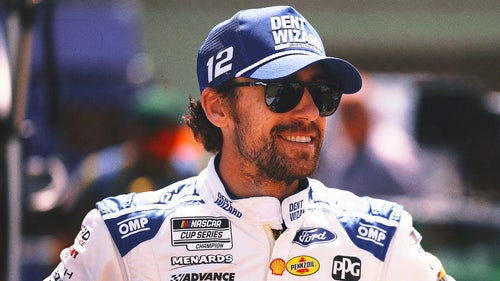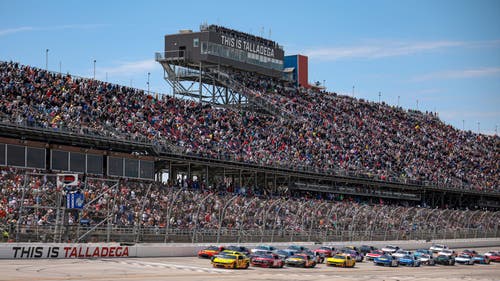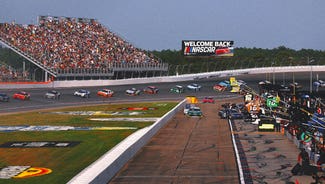
Column: Another last-lap blunder decides Indy 500
In the early going of the Indianapolis 500, Bobby Rahal advised his driver to show a little patience.
If only Takuma Sato had been listening on the last lap Sunday.
The Japanese driver was perfectly positioned when the white flag came out - right behind leader Dario Franchitti. Second was definitely the place to be for the final trip around the 2 1/2-mile oval, these new Indy cars designed in such a way that a trailing driver knew he could slingshot to the front like he had a rocket attached to rear wing.
''The catbird seat,'' ABC analyst Scott Goodyear called it.
Turns out, Sato got a little greedy - the very thing Rahal counseled him against over the radio during the opening stages of the race, when the ex-Formula One driver realized the strength of his car and started darting all over the track to get past anyone in his way.
On that final lap, Sato spotted a narrow opening going into turn one. Franchitti didn't give an inch. Sato got below the white line at the bottom of the track, a treacherous place to be. The rear end began to slide, touching Franchitti's wheels at more than 200 mph.
Franchitti managed to keep control of his machine, speeding off to take the checkered flag for his third Indy 500 win. Sato careened into the outside wall, crawling out of his battered machine for the mandatory ride to the infield care center about the time Franchitti was going past on his victory lap.
The hard hit didn't cause any injuries.
Sato sure was hurting, though.
''I was going for the win,'' he said. ''Very disappointed.''
All day long, the first turn was the most difficult to navigate. All the big wrecks happened going into that corner or coming out of it. That's why runner-up Scott Dixon, Franchitti's teammate and the guy with the best view, was baffled by Sato picking that spot for his daring move.
''I don't know why he didn't wait any longer,'' Dixon said. ''I really don't.''
The winning car owner, Chip Ganassi, would've even been OK with Sato going on by, since there was still nearly an entire lap to go.
''I wasn't too concerned about Dario,'' Ganassi said. ''I thought he'd get him on the back stretch.''
To Rahal's credit, he didn't throw his driver under the bus. The winner of the 1986 Indy 500 knows from experience that so much of racing is instinct. An IndyCar driver has a split-second to make his move. When Sato decided he had the momentum and room to pull off the pass, there was no turning back.
''Takuma drove just a beautiful race,'' Rahal said. ''I have no problem with what he tried to do. It's the last lap of the Indianapolis 500, and if you see an opportunity, you have to go for it.''
That was being a bit charitable.
While Sato is unlikely to be linked through the ages with JR Hildebrand, this was the second year in a row that someone had their first Indy 500 win in the bag - and let it slip away.
Hildebrand's error was more egregious, of course. He was running all alone at the front going into the last turn, just a few hundred yards from victory, when he slammed into the wall. Sato's crash was more reminiscent of the 1989 race, when Emerson Fittipaldi won after touching wheels with Al Under Jr. on the next-to-last lap, sending Little Al into the wall.
But make no mistake, this was as much a blunder as good, hard racing.
''Tak is very aggressive,'' Franchitti said. ''He thought that was his chance. Why not? I think he did everything right up until he lost the rear end of the car. ... Up until that point, I thought he had made a good move.''
Of course, that's like saying the Titanic was an enjoyable cruise until that little collision with a block of ice.
Sato implied the three-time 500 winner pinched him off with a questionable blocking maneuver, but Rahal had no plans to protest. He must've looked at the replays, which clearly showed Franchitti did nothing wrong. He followed the letter of the law regarding how much room he should leave for an attempted pass - essentially, the width of a car.
''I wanted to make sure I left him more than that,'' Franchitti said. ''I didn't touch him. I didn't squeeze him. He just lost the rear of the car.''
No matter who won, this was another thrilling ride for a sport that lost its way during the 1990s, wound up with two dueling series and turned off just about everyone who cared about American open-wheel racing.
On this day, there were a record 35 lead changes - six more than the previous high - and the quality of the racing over the closing laps was downright exhilarating. The best move was turned in by hard-luck Tony Kanaan, who made a zigzagging dash from fifth to first on a late restart, sending the crowd approaching 250,000 into a tizzy. But the popular Brazilian couldn't hold on for his first Indy win, settling for third behind Franchitti and Dixon.
Throw in the poignant tributes to 2011 winner Dan Wheldon, who was killed in a crash at Las Vegas last October, and this was a memorable day all around. Maybe, just maybe, it will be another small step toward restoring IndyCar to a more worthy place in the sporting hierarchy.
Hey, folks, this was just as exciting as NASCAR on its best day.
For everyone but Sato, that is.
---
Paul Newberry is a national writer for The Associated Press. Write to him at pnewberry(at)ap.org or www.twitter.com/pnewberry1963




